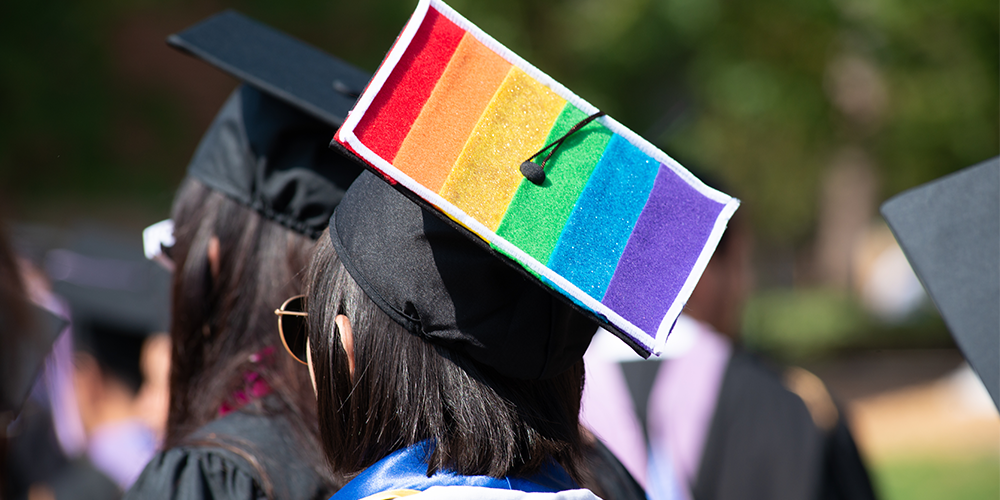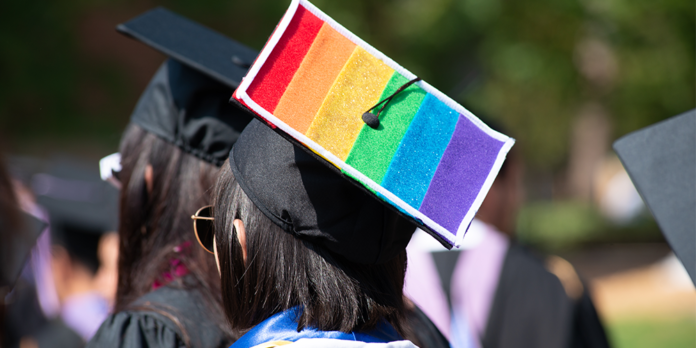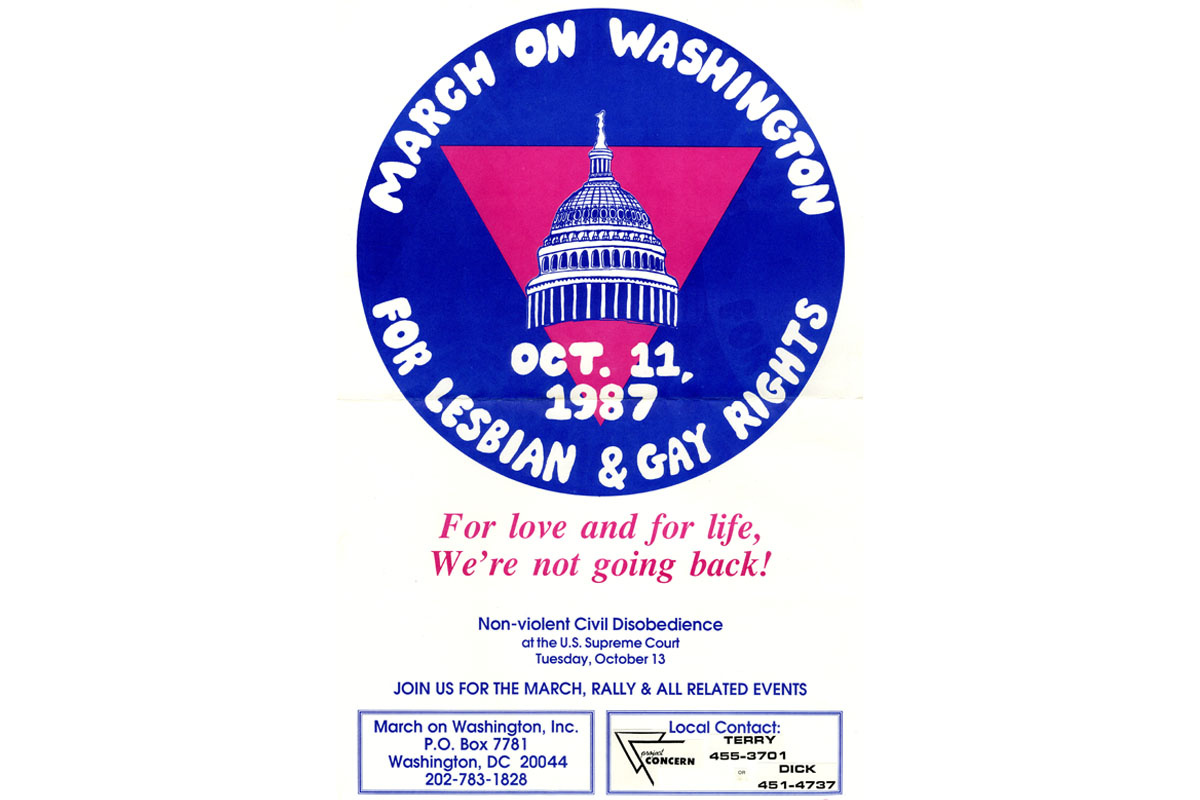
During Pride Month, we proudly celebrate advances in human rights policies that protect some members of the LGBTQ+ community, but people with intersectional identities sadly remain vulnerable and often face discrimination and segregation in their classrooms, laboratories and workplaces.
The term “intersectionality” has permeated academia and beyond in recent years. The idea is that a person can have more than one identity — not just a race, gender, ethnicity, sexuality, disability, nationality or income level (to name a few examples) but several of these identities at once. Some people in educational institutions are proposing and executing strategic plans to make visible people with more than one marginalized identity and the consequences they face.
If you do your own internet search for the word “intersectionality,” you probably will find very interesting information about its definitions, history, theoretical framework, examples and more, but let’s simplify the concept using the following sentence:
Somebody who is (Identity 1 + Identity 2 + Identity 3 + more identities) is going to experience the world differently from somebody who is not.
Now let’s think about this: What is your primary identity? Do you have more than one identity? Have you thought about your identities? Have you faced a barrier due to your identities? Have you gained any benefit (privilege) from your identities?
I hope that these questions have helped you become familiar with the concept and applicability of intersectionality! Now let’s move on and discuss why visibility matters, especially for members of the LGBTQ+ community in academia.
The good
Many institutions highlight during Pride Month the work of people who have made substantial improvements in equity and inclusion of the LGBTQ+ community in academia. Very good examples of these initiatives are:
-
500 Queer Scientists, which describes itself as “a visibility campaign for LGBTQ+ people and their allies working in STEM and STEM-supporting jobs.”
-
The STEM Village, which is similarly “Creating a platform to improve visibility of the LGBTQ+ STEM community around the world.”
-
#UniqueScientists, which profiles scientists of diverse backgrounds.
Despite the different approaches and reasons for their creation, the objectives of these initiatives are to make visible and connect people from the LGBTQ+ community from all over the world as well as organize networking events and scientific meetings.
The bad
Thanks to initiatives such as those mentioned above, the visibility of LGBTQ+ professionals has increased significantly and is getting better every year; however, not everyone experiences the benefits of these improvements, because not all people feel free and safe in their classrooms and workplaces.
Studies suggest that not all people in STEM experience work climates in the same way. These studies have shown that women of color and LGBTQ+ persons experience the highest rates of harassment, assault and other negative workplace experiences.
Specifically, University of Michigan sociologists Erin Cech and Tom Waidzunas reported in the journal Science Advances last year that LGBTQ+ status is an “axis of inequality” in STEM. Those professionals are more likely to experience career limitations, harassment and professional devaluation compared with non-LGBTQ+ colleagues.
Additionally, a 2020 report on the National Institutes of Health’s workplace climate and harassment found: “Respondents who identified as bisexual were more likely to experience sexual harassment in the past 12 months (41 percent) compared with respondents of other sexual orientations. Twenty-nine percent of respondents identifying as lesbian, gay, or homosexual, and 31 percent of respondents identifying as asexual, questioning, or something else experienced sexual harassment in the past 12 months, relative to 20 percent of respondents who identified as heterosexual or straight.”
Clearly, LGBTQ+ people face more barriers in science.
(Two other articles also caught my attention because they illustrate the problem by sharing the experiences of LGBTQ+ professionals in STEM but also propose some strategies to improve the workplace climate. See here and here.)
The worst
Scientists in the LGBTQ+ community often face unfair and dangerous situations in the United States, and it’s even worse for scientists based in Latin American countries, where being openly LGBTQ+ is a privilege for some people and a risk for others. Access to opportunities is limited for those with intersectional identities. Income, education level, skin color and ancestry, to name a few, can create barriers.
For example, in my home country, Mexico, a trans person from a low-income family likely will not have the same opportunities as a trans person from a wealthy family. This should not continue to happen anywhere in the world!
In many Latin American countries, social inequality can define one’s professional future. It blocks access to higher education, reduces job opportunities and negatively affects quality of life. Many people work just to get by on a day-to-day basis, and only very few people get their dream jobs, including some people who are in STEM careers. This lack of upward mobility causes less interest in pursuing STEM careers; they seem unattainable.
I know this from experience — and from witnessing others experience it. Personally, I must admit that it took me a long time to learn to be proud of my identities and recognize myself as part of a particular community. I have experienced discrimination and limitations due to my intersectional identities, but I also have been supported by amazing people. And that’s why my personal mission is to create safe environments and help people follow their dreams! But I can’t do it alone. We need more people to catalyze change and create more inclusive workplaces.
I encourage you to ask your friends and colleagues about the barriers they face just being a person with intersectional identities. Their answers will give you a specific and real idea of what is going on in most educational institutions today.
Toward a more inclusive environment
Even in 2022, people experience barriers that limit their access to personal and professional opportunities just for having intersectional identities, and in some cases, they are the target of blame, intimidation and hate crimes.
So how can we help?
First, having recognized the intersectional barriers faced by many who want to build vibrant STEM careers, we must create supportive and equitable environments for all the activities in which we participate. Everyone needs to feel safe and happy in laboratories, classrooms and wherever they are. The goal is not only to recognize diversity but also to give access to the same opportunities for all people and make them feel safe and included!
I admit that I am not an expert on the subject, but these are some strategies that I have learned from workshops and initiatives in which I have participated. Evaluate and adapt these suggestions and help to build a better climate in your workplaces.
1) Self-educate about diversity, equity, accessibility, inclusion and social justice. Find information on these topics, watch videos, attend specialized talks and listen to experts.
2) Listen and learn from other people’s experiences. Don’t assume. Ask your peers about what they’re going through.
3) Be a role model, avoid microaggressions based on stereotypes, and respect people’s pronouns and use them consistently.
4) Motivate others to do the same and work together to create inclusive environments. Personal changes matter, but institutional initiatives have a greater impact on more people.
5) Create specialized committees for evaluation and promotion processes. Diversity and inclusion improve the academic environment.
6) Increase the visibility of your peers, especially of people with intersectional identities. If you are in a privileged position, talk about the wonderful research and professional accomplishments of your LGBTQ+ colleagues. Advocate for opportunities for them, collaborate with them, and invite them to give talks in your groups and conferences.
Concluding thoughts
To recap: The LGBTQ+ community in STEM is a historically marginalized minority in many countries, and marginalization continues to be a systemic problem with great social and economic consequences. Increasing diversity is not enough.
As I said before, a person with intersectional identities is going to experience the world differently from somebody without, because that person often doesn’t have access to the same opportunities.
But you can make a difference if you work at it. And, in doing so, you’ll make our labs, classrooms and workplaces better for all people who want to build vibrant STEM careers.







